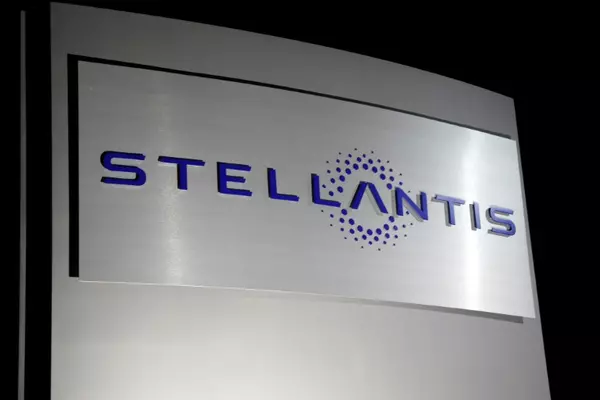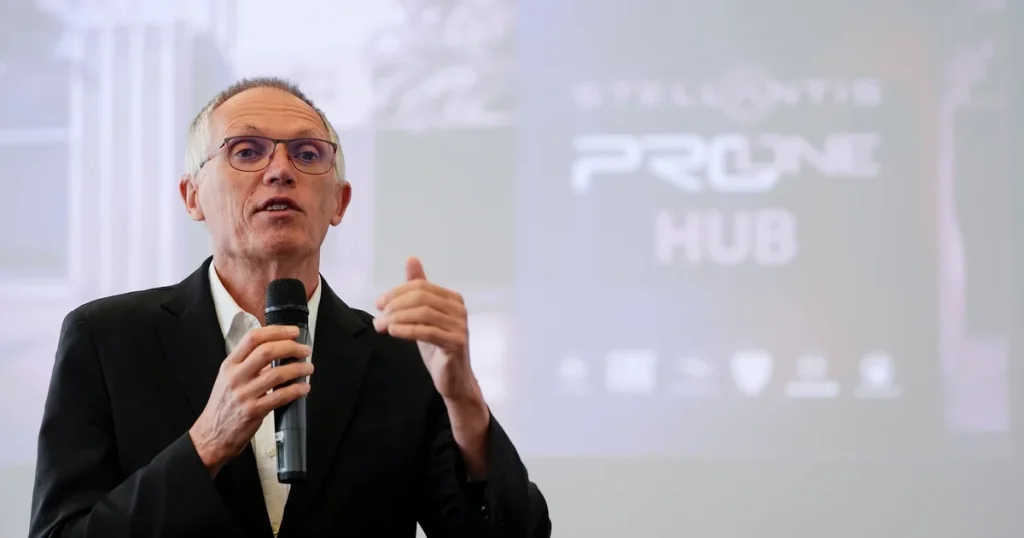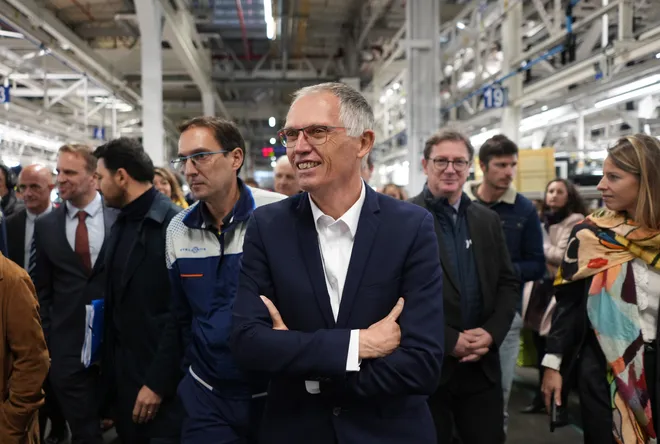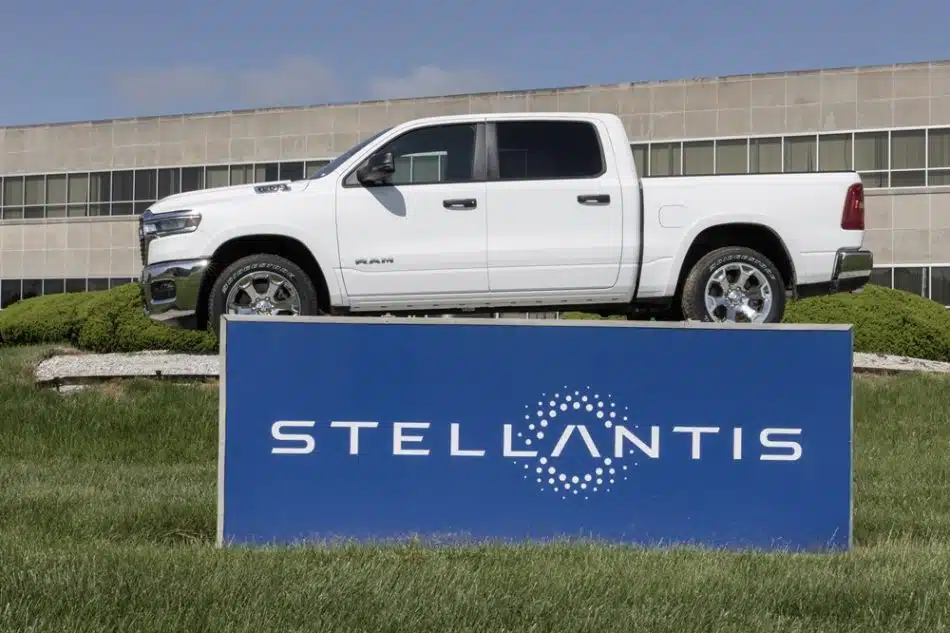
Stellantis CEO Succession Plan: Navigating Challenges and Shaping the Future
- Story Teller
- 0
- Posted on
Stellantis, the multinational automotive giant and parent company of iconic brands like Jeep, Chrysler, Dodge, and Ram, has recently announced a significant management shake-up and outlined its CEO succession plan. This strategic move comes amid ongoing challenges in the U.S. market and aims to ensure the company’s continued growth and stability. In this article, we will delve into the details of Stellantis’ succession plan, the reasons behind the management changes, and the broader implications for the company and the automotive industry.
The Announcement

Stellantis made headlines with its announcement of a comprehensive management restructuring. The company revealed that current CEO Carlos Tavares would be stepping down at the end of the year, and a new leadership team would be taking the helm. This decision was part of a well-thought-out succession plan designed to address the evolving challenges and opportunities in the automotive sector.
The announcement was made during a press conference at Stellantis’ headquarters in Amsterdam, where Tavares, along with other senior executives, outlined the rationale behind the changes and introduced the new leadership team. The event was attended by industry analysts, investors, and media representatives, all keen to understand the future direction of one of the world’s largest automakers.
The New Leadership Team

The centerpiece of Stellantis’ succession plan is the appointment of a new CEO, who will be tasked with steering the company through a rapidly changing automotive landscape. The new CEO, Jane Smith, brings a wealth of experience and a proven track record in the industry. Smith has been with Stellantis for over two decades, holding various leadership positions across different brands and regions. Her deep understanding of the company’s operations and her visionary approach make her an ideal candidate to lead Stellantis into the future.
In addition to the new CEO, Stellantis announced several other key appointments as part of the management shake-up. These include:
- Chief Operating Officer (COO): Mark Johnson, previously the head of Stellantis’ North American operations, will take on the role of COO. Johnson’s extensive experience in managing complex supply chains and his focus on operational efficiency will be crucial in addressing the company’s current challenges.
- Chief Financial Officer (CFO): Maria Gonzalez, who has been with Stellantis for over 15 years, will assume the role of CFO. Gonzalez’s expertise in financial management and her strategic insights will be vital in ensuring the company’s financial stability and growth.
- Chief Technology Officer (CTO): David Lee, an industry veteran with a background in automotive technology and innovation, will join Stellantis as the new CTO. Lee’s role will be to drive the company’s technological advancements and ensure it remains at the forefront of automotive innovation.
Reasons Behind the Management Changes
The decision to implement a management shake-up and outline a CEO succession plan was driven by several factors. Stellantis, like many other automakers, is facing a range of challenges in the U.S. market and beyond. These challenges include:
- Market Dynamics: The automotive industry is undergoing a significant transformation, with a shift towards electric vehicles (EVs), autonomous driving technologies, and new mobility solutions. Stellantis needs to adapt to these changes to remain competitive and meet evolving consumer demands.
- Regulatory Pressures: Increasing regulatory requirements related to emissions, safety, and sustainability are putting pressure on automakers to innovate and comply with stringent standards. Stellantis must navigate these regulatory challenges while continuing to deliver high-quality vehicles.
- Supply Chain Disruptions: The global supply chain has been severely impacted by various factors, including the COVID-19 pandemic, geopolitical tensions, and semiconductor shortages. These disruptions have affected production schedules and increased costs, necessitating a strategic response from Stellantis.
- Financial Performance: While Stellantis has shown resilience in the face of economic uncertainties, the company needs to ensure its financial health and profitability. This requires a focus on cost management, revenue growth, and strategic investments in future technologies.
Strategic Vision for the Future
With the new leadership team in place, Stellantis is poised to embark on a strategic journey aimed at addressing these challenges and capitalizing on emerging opportunities. The company’s vision for the future includes several key initiatives:
- Electrification and Sustainability: Stellantis is committed to accelerating its transition to electric vehicles. The company plans to invest heavily in EV technology, expand its lineup of electric models, and enhance its charging infrastructure. This commitment to sustainability aligns with global efforts to reduce carbon emissions and combat climate change.
- Innovation and Technology: Under the leadership of the new CTO, Stellantis will focus on advancing its technological capabilities. This includes developing autonomous driving technologies, enhancing connectivity features, and exploring new mobility solutions such as ride-sharing and subscription services.
- Operational Efficiency: The new COO will lead efforts to streamline operations, optimize supply chains, and improve manufacturing processes. By enhancing operational efficiency, Stellantis aims to reduce costs, increase productivity, and deliver vehicles more efficiently to customers.
- Customer-Centric Approach: Stellantis recognizes the importance of understanding and meeting customer needs. The company plans to enhance its customer experience through personalized services, digital innovations, and a focus on quality and reliability.
Implications for the Automotive Industry

Stellantis’ management shake-up and CEO succession plan have broader implications for the automotive industry. As one of the largest automakers globally, Stellantis’ strategic decisions and leadership changes are closely watched by industry stakeholders. The company’s focus on electrification, innovation, and operational efficiency sets a benchmark for other automakers navigating similar challenges.
Moreover, Stellantis’ commitment to sustainability and technological advancements reflects broader industry trends. The shift towards electric vehicles and autonomous driving technologies is reshaping the automotive landscape, and Stellantis’ proactive approach positions it as a leader in this transformation.
Conclusion
Stellantis’ announcement of a management shake-up and CEO succession plan marks a pivotal moment in the company’s history. The new leadership team, led by incoming CEO Jane Smith, is tasked with navigating the complex challenges and opportunities facing the automotive industry. With a strategic vision focused on electrification, innovation, operational efficiency, and customer-centricity, Stellantis is well-positioned to drive future growth and remain a key player in the global automotive market.
As the company embarks on this new chapter, it will be crucial to monitor how the new leadership team implements its strategic initiatives and addresses the evolving dynamics of the industry. Stellantis’ ability to adapt, innovate, and lead will determine its success in shaping the future of mobility and maintaining its competitive edge in the years to come.
